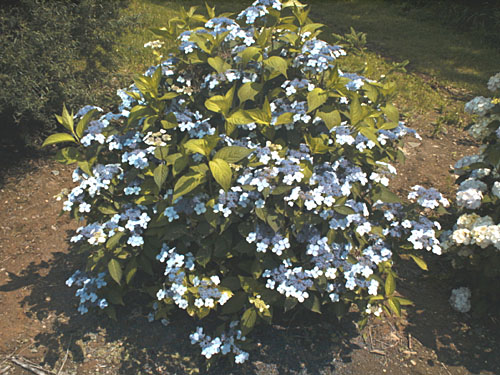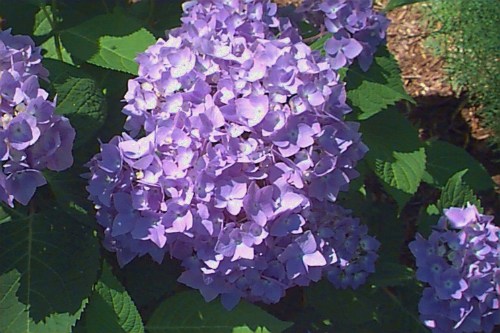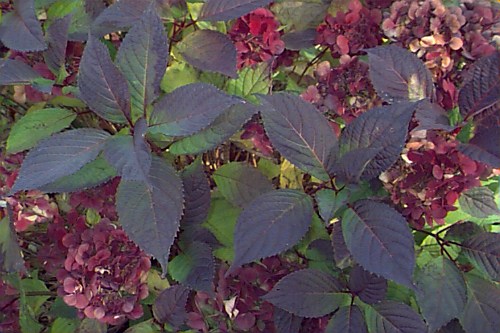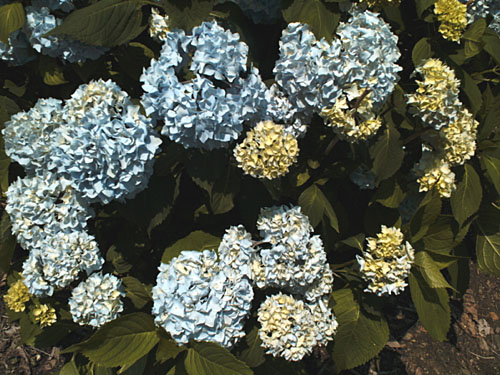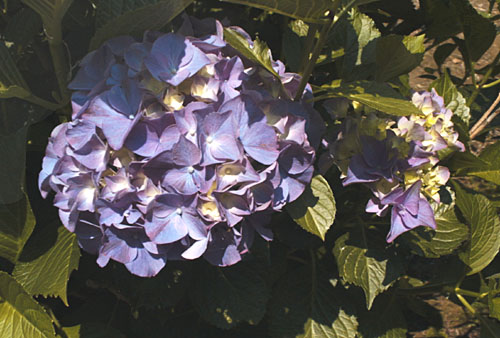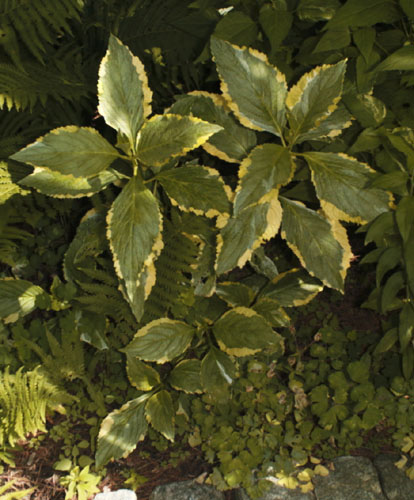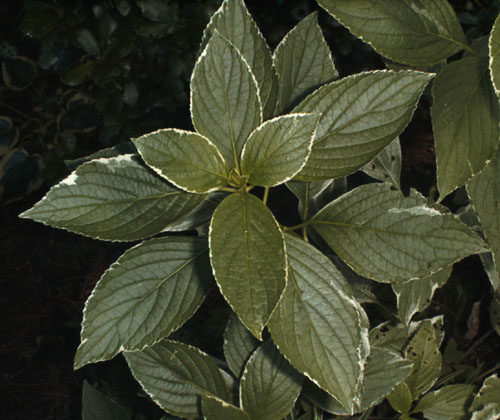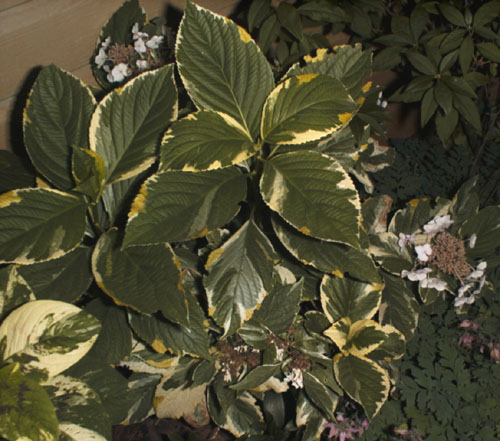Hydrangea macrophylla
Bigleaf Hydrangea
Hydrangeaceae
ExpandHabitat
- native to Japan
- zone 6
- does not flower in cold climates
Habit and Form
- rounded deciduous shrub
- stems emerge from ground and rarely branch
- 3' to 6' tall and has an equal spread
- fast growth rate
- coarse texture
Summer Foliage
- opposite leaf arrangement
- simple leaves, 4" to 8" long
- 3" to 6" wide
- leaf margins serrated
- medium green leaf color
- stout petiole about 1" in length
- high quality foliage
Autumn Foliage
- leaves turn pale yellow and fall off
- not ornamentally significant
Flowers
- numerous cultivars make flower description difficult
- flowers are pink, white, blue or purple
- up to 2" or more in diameter
- individual flowers make a broad corymb
- blooms July through August
- very showy
Fruit
- dry capsule
- not ornamentally important
Bark
- straw tan color
- often die back in winter
- large leaf scars present
Culture
- full to partial shade
- requires a moist, organic, fertile soil
- mulch the root zone
- protect young plants in winter for they are more tender than the older plants
- prune after flowering
- transplants easily
- salt tolerant
- does not do well in hot, dry conditions
- flower color is dependant on soil pH
- acid soil procedures blue flowers, alkaline produces pink
Landscape Use
- shrub border
- high quality foliage
- specimen
- groupings
- mass plantings
- to add textural variety to a landscape
- naturalizing
- foundation plant
- seaside planting
- flower affect
Liabilities
- lack of winter hardiness
- in zone 5 twig kill and especially flower bud injury is likely
- leaf spot, powdery mildew, scales, mites
- flower color changes with soil type
ID Features
- stems emerge from ground with few branches
- large opposite, serrated leaves
- huge balls of flowers covering plant in summer
- large leaf scars
- persistent flower panicles
Propagation
- by cuttings
Cultivars/Varieties
Dozens are available, but listed are common forms that give an idea of the range available. Also listed are forms suitable for cultivation in colder zones, where this species often loses its flower buds.
'All Summer Beauty' - This selection may be more appropriate for colder areas, as it supposedly blooms on current season's growth and thus will flower despite late frost damage. The profuse mophead blooms are deep blue in acid soil, and the plant grows 4' tall and wide.
'Ayesha' - Unusual for its rounded flower petals, slight fragrance and lustrous foliage, this cultivar is gaining popularity. The mophead flowers are pink-purple. This form may be less hardy than others.
'Blue Wave' - The most popular blue-flowered lacecap form, this plant is also hardier than similar plants. It grows to 7' tall and wide and features outer bloom florets of blue to pink (depending on soil pH).
'Golden Sunlight' - (a cultivar of H. m. var. serrata) A new form that is very unusual for its new leaves which emerge golden yellow and mature to light green with age. The blooms are pinkish and the plant grows to 3' tall and wide.
'Lemon Wave' (similar to 'Quadricolor') - Grown mostly as a foliage plant, this form has spectacular variegation -- with zones of gold, white and green on each leaf. It rarely flowers in colder zones.
'Nikko Blue' - This is the most common blue-flowered mophead form, useful in colder areas since is reportedly will produce some flowers on new growth late in the season. Acid soil will produce the deepest blue color on this 4' tall shrub.
'Madame Emile Mouillere' - A hardy mophead form, this plant is also notable for its heavy production of pure white flowers that develop hints of blue-pink with age. It grows to 5' tall and wide.
'Mariesii Variegata' (may be the same as 'Variegata') - This is the most common variegated leaf form, with deep green foliage edged in white. It reaches 5' tall and bears lacecap blooms, but it rarely flowers well in colder zones such as New England.
'Pia', 'Forever Pink' and 'Tovelit' - A trio of dwarf forms, these selections are among the most popular compact selections -- reaching only 3' tall and wide. The mophead flowers are in shades of pink.
